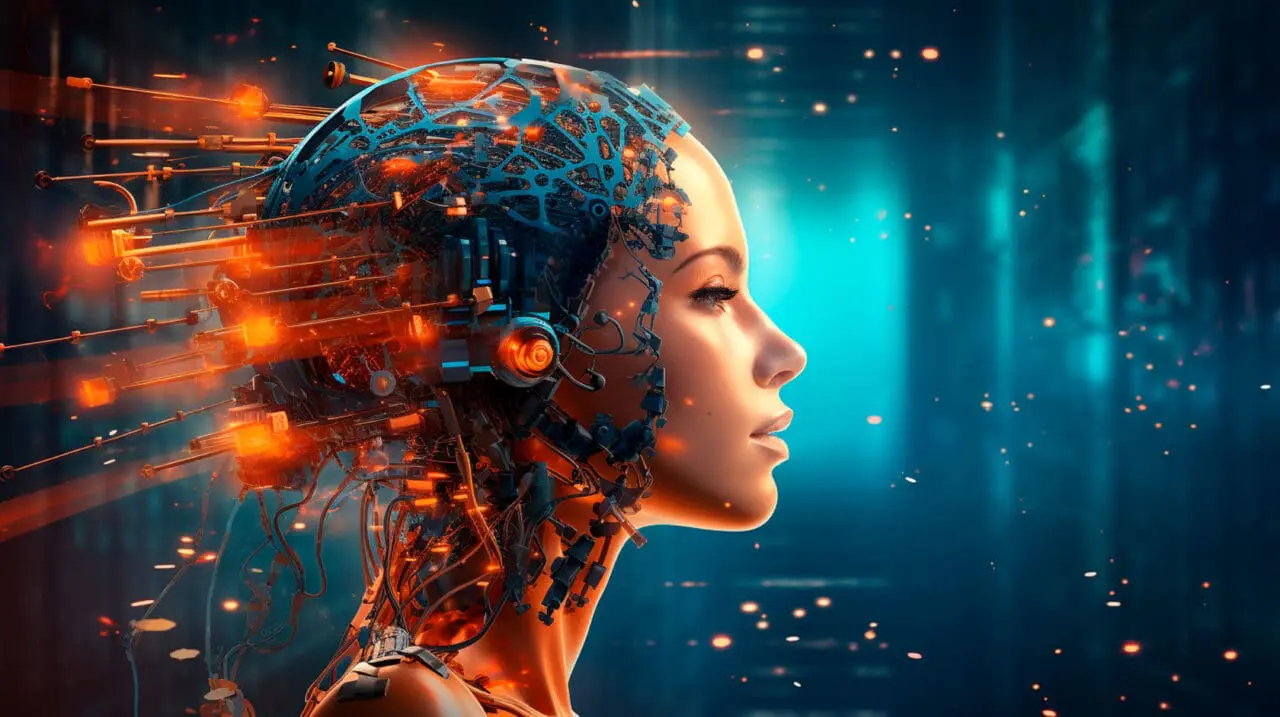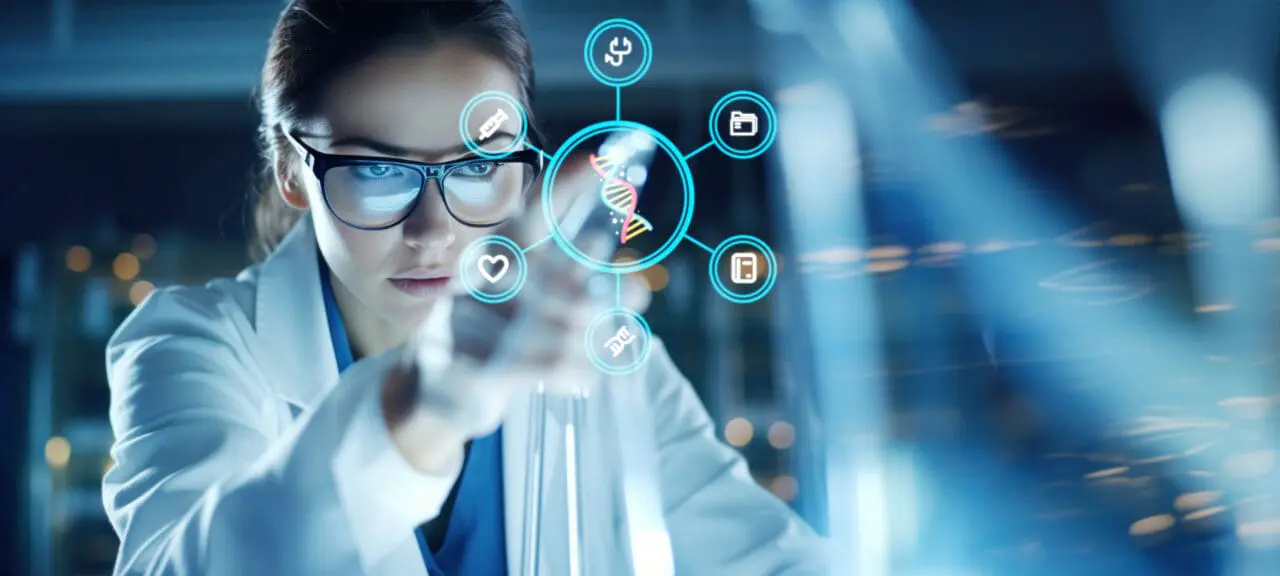

Researchers are on the brink of a major healthcare revolution with the development of biohybrid robots, also known as living robots or bio bots. These innovative machines blend biological and machine parts, combining living tissue with modern robotics. The result is a cutting-edge technology that promises to revolutionise targeted drug delivery systems. By navigating the human body with unparalleled precision, these biohybrid robots have the potential to treat diseases at the cellular level, increasing treatment efficacy and minimising side effects. This groundbreaking work, led by the University of Tokyo, heralds a new era in personalised medicine.
Biohybrid robots, also known as machine parts robots, are a groundbreaking advancement in tissue engineering. By combining biological and machine parts, these robots have the potential to revolutionise regenerative medicine. Researchers envision their role in aiding tissue regrowth, wound healing, and organ repair. The University of Tokyo’s pioneering biohybrid technology is paving the way for transformative medical interventions. These interventions may involve the delivery of reparative cells to damaged areas or the creation of scaffolds that provide both biological and structural support for new tissue growth. This exciting development opens up new possibilities in harnessing the body’s innate ability to heal itself using a combination of chemical, physical, and biological approaches.
The emergence of biohybrid robots has brought forth a new approach to environmental stewardship, particularly in the expansive oceans. These robots, combining biological and machine parts, can be deployed to meticulously monitor pollution levels in marine environments, providing real-time data crucial for preserving aquatic ecosystems. By integrating living tissue and metal, these robots possess sensory capabilities similar to organisms, enabling them to detect and analyse pollutants with exceptional sensitivity. Research teams, such as those at the University of Tokyo, are at the forefront of pioneering these technologies, showcasing not only their feasibility but also the extensive environmental benefits of using biohybrid systems for oceanic conservation efforts.
The agricultural sector teeters on the edge of a new era, where biohybrid robotics, combining creature-like biological and machine parts, are set to redefine precision farming. These remarkable robots offer unprecedented capabilities in plant monitoring and crop management. At institutions like the University of Tokyo, scientists are developing biohybrid machines that possess muscle-like strength, with the ability to deliver nutrients directly to plant roots, offer clues about soil health at a micro-level, and even detect early signs of disease or insect infestation. This new generation of agricultural robots holds the answer to increased crop yields, more efficient resource utilisation, and a reduction in the environmental impacts associated with traditional farming practices.
The creation of biohybrid robots, which combine biological and machine parts, raises crucial ethical questions that must be addressed to ensure responsible development and deployment. Controlled experiments conducted in labs, like those at the University of Tokyo, play a pivotal role in setting a precedent for responsible research and implementation. As the capabilities of these robots expand, comprehensive oversight becomes increasingly necessary. Such oversight should focus on privacy concerns, environmental impact, and the long-term effects of integrating these technologies into society. Establishing clear and effective regulatory frameworks will be instrumental in maintaining public trust and promoting safe innovation in the field of biohybrid robotics.
Amidst a landscape of technological innovation, biohybrid robots emerge not just as tools for medical and environmental applications, but as versatile assets across numerous industries. Their unique composition and properties allow them to operate in conditions where traditional robotics may falter, offering solutions from the darkest depths of the ocean to the complexities of the modern business world. With adaptive mechanisms inspired by marine life, these robots can perform underwater exploration and data collection. In the lab, dedicated teams develop and create biohybrid technology to shape the future of intelligent automation processes that are sensitive and adaptive to live workflows. This diverse applicability positions biohybrid robots not just as a niche innovation, but as a cornerstone of future technological ecosystems.
The University of Tokyo stands at the vanguard of biohybrid robot technology, breaking new ground in several scientific and practical domains. Its researchers are not only inventing devices that blend the biological with the mechanical, but they are also setting the stage for a future where technology moves beyond inanimate constructs to systems that emulate living entities. The institution’s relentless pursuit in advancing biohybrid robots promises a cross-disciplinary impact, from transforming healthcare and environmental conservation to revolutionising agriculture and industrial processes. This pioneering work not only exemplifies technological innovation but also reflects a deep understanding of the interplay between nature and machine, which is fast becoming the hallmark of next-gen robotics.
Biohybrid robots, with their symbiotic blend of organic materials and mechanical components, are redefining the landscape of manufacturing. The advanced tactile sensitivity and adaptative learning capabilities of biohybrid systems allow for tasks that require a high degree of precision and care, traditionally relying on the irreplaceable dexterity of human hands. The University of Tokyo’s developments in this field are pioneering new ways in which these robots can be integrated into production lines, enhancing efficiency and reducing the risk of error. This has profound implications for industries such as pharmaceuticals, where contamination control is crucial, or electronics, where components are often too delicate for conventional machines. As we continue to explore the vast potential of biohybrid robotics, it is increasingly clear that they are poised to become essential cogs in the wheels of modern manufacturing.
The realm of defence could witness a transformative shift with the advent of biohybrid robots, as developments by institutions like the University of Tokyo hint at their potential to revolutionise this sector. Their unique capabilities, blending the responsiveness of organic tissues with mechanical prowess, could lead to advancements such as reconnaissance drones with insect-like evasiveness or machinery that can repair itself. The intuitive nature of biohybrid systems allows for seamless integration into challenging environments, providing military operations with tools that can adapt and respond to dynamic battlefields. This new generation of defence technology, with enhanced survivability and efficacy, promises a significant leap forward in protecting nations and their interests.


